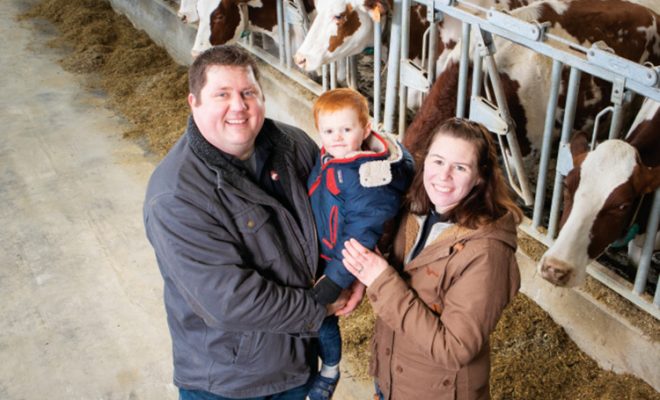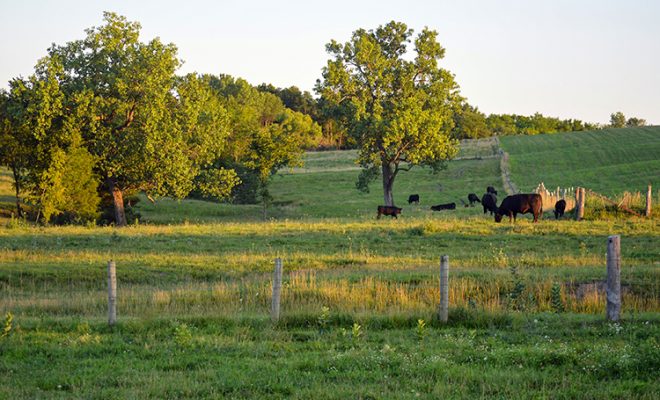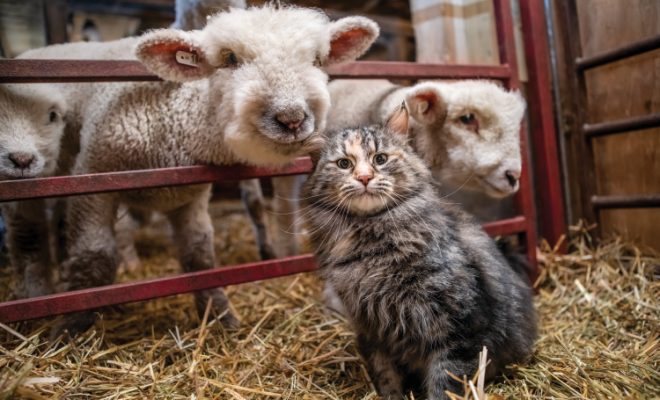
One frigid February evening, Altona farmer Monica Stevens rested in the warmth of her farmhouse when she heard a ruckus among her cows outside. She stepped into the subzero temperatures to discover a calf born early – about three weeks ahead of her farm’s predicted season for calving, which refers to cattle giving birth.
Stevens carried the premature calf into her warm house where she nurtured it for three evenings. She provided vaccinations, bottles of milk and the patience for it to walk. The stronger calf then returned to its mother under supervision, suited in a hooded sweatshirt as it acclimated to that bitter cold February in the barn.
“We take raising cattle very seriously in how we treat them,” says Stevens, who raises purebred Shorthorn cattle with her father, Glenn, in west central Illinois. “I’m a big believer in how you treat something is how they treat you. We treat our cattle with utmost respect, and they do a good job for us.”
Hard work and experience combine with modern technology to support successful calving throughout Illinois where about 400,000 new calves will arrive this year. Barn cameras, electronic records, evolving herd health programs and calving assistance equipment expand the levels of care and management on today’s cow-calf operations (farms in the business of raising cows to give birth to calves). Throughout Illinois, those farms gear up for calving season, which often falls in late winter and early spring. The season prompts farmers to stay on call day and night, read the behaviors of pregnant cows, and work through tough calving conditions in cold or mud.
“Calving is my most favorite activity ever,” says Stevens, a third-generation cattle farmer who expects 65 calves this season. “It’s stressful, it’s long hours, it’s back-breaking hard work, but I absolutely love it because it’s very rewarding. Calving season is something beautiful. It’s like opening up a gift every day and to get to actually see nine months of work being paid off with a lovely baby calf.”
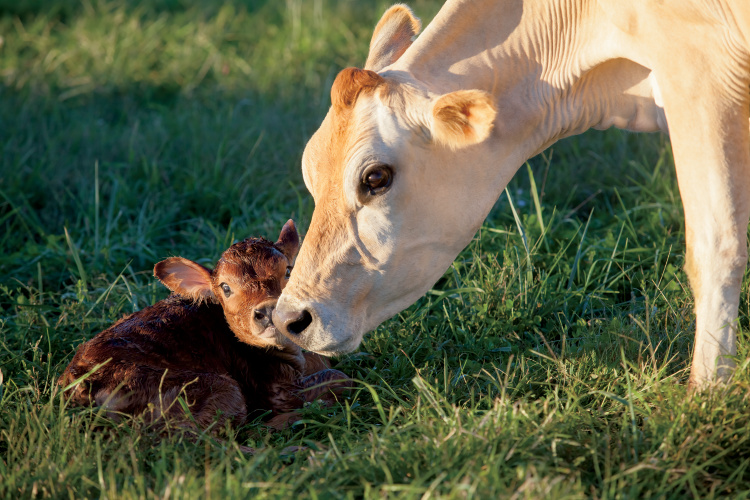
Cameras and Calf Care
Alison McGrew and husband, Justin, in Good Hope buy up their cellphone plan’s data limit during their farm’s calving season from January to March. Both work agricultural jobs off the farm, so the couple watches live video footage of their most pregnant cows on smartphones.
“We put the barn cameras in as a protective management tactic for us,” says McGrew, who will care for an expected 70 calves this season at their west central Illinois farm, McGrew Cattle. “We can see a cow in distress through an app on our smartphones. My husband is three miles away and can run home.”
Ideally, a cow gives birth without assistance, but sometimes a calf’s positioning or size causes trouble. Most often, farmers provide that help. But, in difficult situations, they call their veterinarian. For those reasons, Stevens invested in modern calving tubs, or pens that keep the cow, farmer and veterinarian safe during calving assistance.
Within 12 hours of birth, the McGrew family follows a veterinary-recommended program to vaccinate the calves. They administer vitamins and also a medication called First Defense Bolus, which prevents scours, a potentially fatal diarrhea.
“After they get the colostrum, those calves still need a little help,” says McGrew, referencing the critical first milk of natural antibodies from the mother. “They need help getting their immune system coded for protection. We do that with vitamins A, D, E and First Defense.”
Stevens says her farm’s health program for newborn calves evolves with new products and herd health needs. She estimates spending about $40 per calf for medications and supplements. The expense proves “worth every penny” to ensure a healthy start and vigorous life, she says.
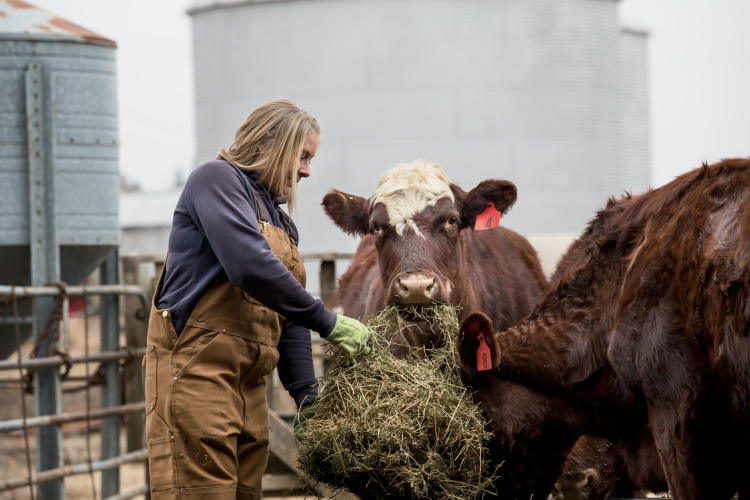
Tag, Record, Repeat
As at most farms, the calves at both the McGrew and Stevens farms earn a numbered tag that provides the identification for a slew of records.
McGrew and her two kids give each calf an ear tag, which resembles an earring and does not hurt the animal. Then, she immediately logs a calf’s data with her smartphone’s access to Google spreadsheets and a calendar.
Stevens opts for a temporary paper tag at birth and later a permanent color-coded ear tag. She uses a book to record the tag number, birth date and time, vaccinations, summary of the cow’s calving experience, a calf’s weight and more. Each night, Stevens transfers the data to her computer, the start of a lifetime of in-depth records on each animal. Then, the cycle continues. Breeding resumes in the summer and calves arrive again the following winter and spring.
“My Crock-Pot is my friend when we are calving,” McGrew says. “It gets dark early. It might be cold, and it might be snowing. The laundry might be piling up. Honestly, we don’t eat until everything is done outside. There’s nothing like going out to the barn and seeing a handful of new calves and our kids excited.”
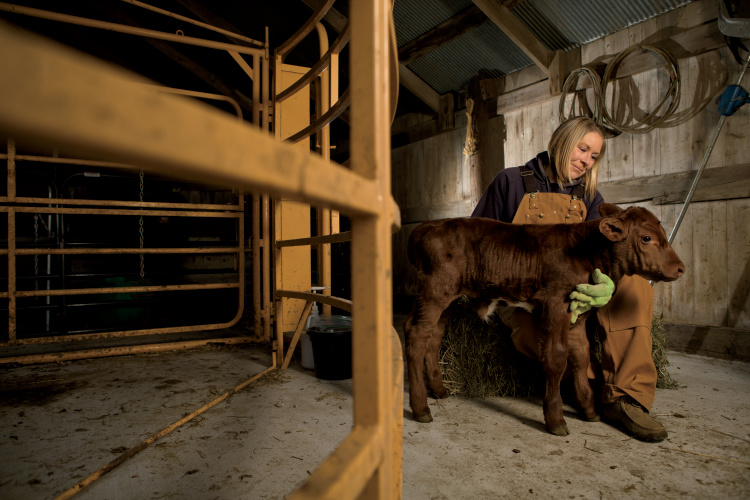
She hopes her children continue to have as much passion about calf care as she and her husband do.
“Scooping and cleaning a calving pen isn’t a big deal to them,” McGrew says. “But, for me as a mom, seeing my kids enjoying those things and wanting to do those things – there isn’t anything that compares to that right now.”


